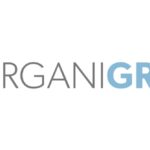West Texas Intermediate crude fell for a sixth straight session amid expectations government data will show a jump in US crude inventories to a new record. Brent rose as Chinas manufacturing sector surprisingly expanded, while Greece received a four-month expansion of its bailout program.
US crude for delivery April traded 0.28% lower at $49.14 per barrel at 7:50 GMT, shifting in a daily range of $49.36-$49.06. The contract slid 0.34% on Tuesday to $49.28 a barrel, a fifth consecutive daily loss.
Meanwhile on the ICE, Brent for settlement in the same month stood at $58.83 per barrel, up 0.29% on the day, holding in a narrow daily range of $58.94-$58.65. The European crude benchmark fell 0.41% on Tuesday to $58.66, settling at a premium of $9.38 to its US counterpart. The gap widened to $9.69 on Wednesday.
WTI extended a 5-day drop after data by the American Petroleum Institute showed yesterday that US crude oil inventories surged by 8.9 million barrels last week, albeit registering a drop in both major refined product categories.
Government data by the Energy Information Administration is expected to show at 15:30 GMT today that US crude stockpiles probably gained 3.98 million barrels in the seven days through February 20th. Motor gasoline inventories likely slid by 1.47 million barrels, while distillate fuel supplies may have fallen by 3.05 million.
Better-than-expected manufacturing data from China, however, helped cushion losses, while propelling Brent up. HSBC, in collaboration with Markit Economics, reported that activity in Chinas manufacturing sector expanded in February, defying projections for a third month of contraction. The HSBC Flash China Manufacturing PMI rose to a four-month high of 50.1 from 49.7 in January, compared to expectations for a drop to 49.5.
The manufacturing output index reached a five-month high of 50.8. The report also showed that domestic demand improved but new export orders declined for the first time since April and both input and output prices remained in contraction.
Hongbin Qu, Chief Economist, China & CoHead of Asian Economic Research at HSBC said: “Todays data point to a marginal improvement in the Chinese manufacturing sector going into the Chinese New Year period in February. However, domestic economic activity is likely to remain sluggish and external demand looks uncertain. We believe more policy easing is still warranted at the current stage to support growth.”
Fed, Greece
Also providing support, Fed Chairwoman Janet Yellen said in a testimony before the US Congress that an interest rate hike is not imminent. She added that the US economy has improved to the point where an increase in borrowing costs could come at any meeting, suggesting the central bank could consider hiking rates on a “meeting-by-meeting basis”.
While Yellens testimony meant for some investors that a rate hike can still come as early as June, others saw it as a possible delay for the third or fourth quarter.
A successful extension of Greeces bailout program also benefited the oil market. Eurozone finance ministers approved on Tuesday Greeces reform plan which included a revamp of tax collection, scaling back fears of a Greek default and an unprecedented euro-area exit.
Oil prices drew support earlier in the week after Nigeria’s oil minister said the country will call for an extraordinary OPEC meeting, if the price rout continues. However, OPEC delegates said on Tuesday that the group has no plans of holding a meeting before the next scheduled one in June. The oil cartel exceeded its collective quota of 30 million bpd in January for an eight straight month.
Data yesterday showed that the German economy expanded by an annualized 1.6% in the fourth quarter, outstripping projections for an 1.5% expansion, while quarter-on-quarter growth matched expectations for 0.7%. Consumer confidence in the US eased in February, the Conference Board reported, while the S&P/Case-Shiller House Price Index rose by an annualized 4.5% in December, compared to projections for 4.3%. Data later today may show that sales of newly built homes in the US slid on a monthly basis by 1.3% in January.
Pivot points
According to Binary Tribune’s daily analysis, West Texas Intermediate April futures’ central pivot point is at $49.43. In case the contract breaches the first resistance level at $50.18, it may rise to $51.08. Should the second key resistance be broken, the US benchmark may attempt to advance $51.83.
If the contract manages to breach the first key support at $48.53, it might come to test $47.78. With this second support broken, movement to the downside could continue to $46.88.
Meanwhile, April’s central pivot point is projected at $59.02. The contract will see its first resistance level at $59.94. If breached, it may rise and test $61.22. In case the second key resistance is broken, the European crude benchmark may attempt to advance $62.14.
If Brent manages to penetrate the S1 level at $57.74, it could continue down to test $56.82. With the second support broken, downside movement may extend to $55.54 per barrel.





